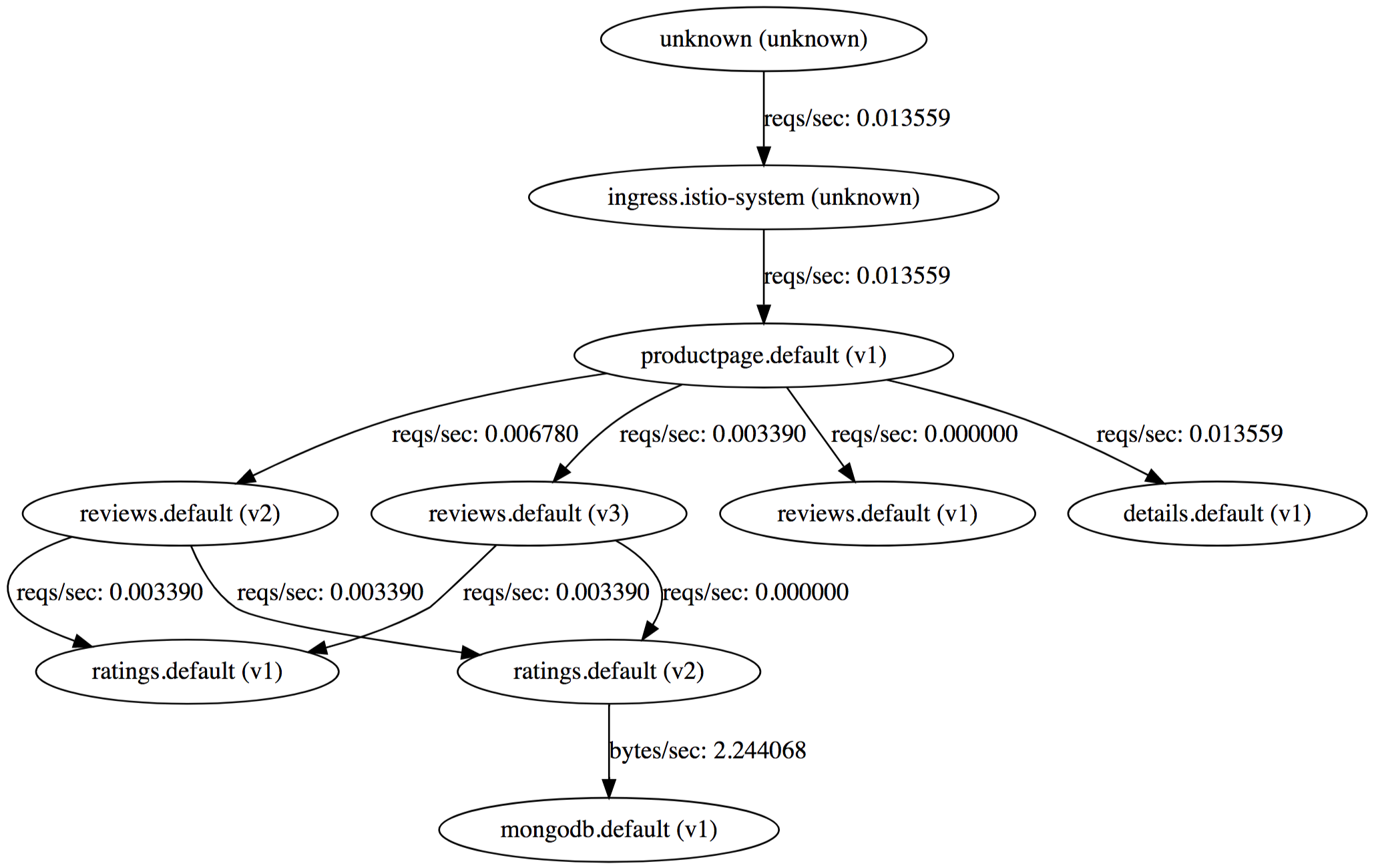Generating a Service Graph
This task shows you how to generate a graph of services within an Istio mesh. As part of this task, you will install the ServiceGraph addon and use the web-based interface for viewing service graph of the service mesh.
The BookInfo sample application is used as the example application throughout this task.
Before you begin
Install Istio in your cluster and deploy an application.
Install the Prometheus add-on. Directions for install of this add-on are supplied as part of the Querying Metrics Task.
Use of the Prometheus add-on is required for the service graph.
Generating a Service Graph
To view a graphical representation of your service mesh, install the Servicegraph add-on.
In Kubernetes environments, execute the following command:
kubectl apply -f install/kubernetes/addons/servicegraph.yamlVerify that the service is running in your cluster.
In Kubernetes environments, execute the following command:
kubectl -n istio-system get svc servicegraphThe output will be similar to:
NAME CLUSTER-IP EXTERNAL-IP PORT(S) AGE servicegraph 10.59.253.165 <none> 8088/TCP 30sSend traffic to the mesh.
For the BookInfo sample, visit
http://$GATEWAY_URL/productpagein your web browser or issue the following command:curl http://$GATEWAY_URL/productpageRefresh the page a few times (or send the command a few times) to generate a small amount of traffic.
Note:
$GATEWAY_URLis the value set in the BookInfo guide.Open the Servicegraph UI.
In Kubernetes environments, execute the following command:
kubectl -n istio-system port-forward $(kubectl -n istio-system get pod -l app=servicegraph -o jsonpath='{.items[0].metadata.name}') 8088:8088 &Visit http://localhost:8088/dotviz in your web browser.
The results will look similar to:

About the Servicegraph Add-on
The Servicegraph service is an example service that provides endpoints for generating and visualizing a graph of services within a mesh. It exposes the following endpoints:
/graphwhich provides a JSON serialization of the servicegraph/dotgraphwhich provides a dot serialization of the servicegraph/dotvizwhich provides a visual representation of the servicegraph
All endpoints take an optional argument of time_horizon, which controls the timespan to consider for graph generation.
All endpoints also take an optional argument of filter_empty=true, which will restrict the nodes and edges shown to only those that reflect non-zero traffic levels during the specified time_horizon.
The Servicegraph example is built on top of Prometheus queries.
Cleanup
In Kubernetes environments, execute the following command to remove the ServiceGraph add-on:
kubectl delete -f install/kubernetes/addons/servicegraph.yamlIf you are not planning to explore any follow-on tasks, refer to the BookInfo cleanup instructions to shutdown the application.